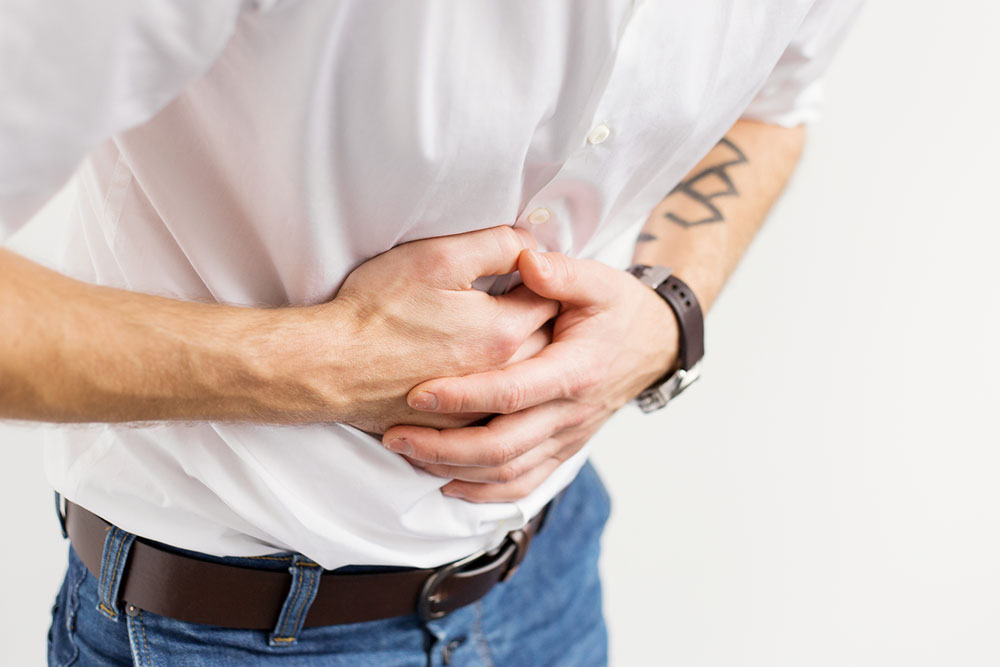Comprehensive Guide to Hemorrhoids: Causes, Symptoms, and Types
Hemorrhoids are swollen veins in the lower rectum and anus, often caused by straining, pregnancy, and lifestyle factors. This comprehensive guide explores the different types—internal, external, and thrombosed—along with symptoms, causes, and effective treatment options. Prevention includes high-fiber diets, hydration, and avoiding prolonged sitting or heavy lifting. Treatments range from conservative measures like topical creams and lifestyle adjustments to surgical procedures for severe cases. Early diagnosis and management are crucial for relief and preventing complications, making awareness and timely intervention essential.

Hemorrhoids, derived from the Greek word for blood-filled veins, are a common medical condition characterized by swollen and inflamed veins located in the lower part of the rectum and anus. These anatomical structures, often called hemorrhoidal cushions, play a vital role in maintaining continence by supporting stool control. However, when these veins become engorged, stretched, or irritated, they can cause significant discomfort and health issues. Understanding the various dimensions of hemorrhoids—such as their origins, symptoms, types, and potential causes—is essential for effective management and prevention.
Hemorrhoids develop when veins in the rectal and anal region experience increased pressure or trauma. This can happen due to a variety of factors, ranging from lifestyle choices to physiological changes. The accumulation of pressure causes the veins to swell, which can lead to symptoms like bleeding, itching, swelling, and pain. The severity of these symptoms often correlates with the type of hemorrhoid present and the individual's overall health.
There are generally three main classifications of hemorrhoids: internal, external, and thrombosed. Each type has distinct features, symptoms, and treatment approaches. These classifications help healthcare professionals determine the most effective management strategies based on the location and severity of the hemorrhoids.
Understanding Hemorrhoids: Types and Features
Internal Hemorrhoids
Internal hemorrhoids are situated inside the rectum and are typically painless due to the lack of pain-sensitive nerve fibers in this area. They are often detected during routine medical examinations. Symptoms can include painless rectal bleeding, which appears bright red on toilet paper or stool. Internal hemorrhoids may prolapse or protrude outside the anal opening, especially during bowel movements or physical activity, causing discomfort and vulnerability to irritation.
External Hemorrhoids
External hemorrhoids are located beneath the skin surrounding the anus and are more visible and palpable. They can cause noticeable swelling, pain, and discomfort, particularly when irritated or thrombosed. Thrombosed external hemorrhoids occur when a blood clot forms within the swollen vein, resulting in intense pain and a hard lump near the anal opening. These are often accompanied by swelling and may require prompt medical attention.
Thrombosed Hemorrhoids
This subtype occurs when blood within an external hemorrhoid clots, resulting in rapid-onset intense pain, swelling, and a bluish or dark appearance of the affected area. Thrombosed hemorrhoids often cause significant discomfort and may require surgical intervention or minimally invasive procedures for relief. Prompt treatment can reduce pain and prevent complications such as infection.
Common Symptoms and Signs of Hemorrhoids
Bright red bleeding during bowel movements or on toilet paper
Itching or irritation around the anal area
Swelling or lumps near the anus
Discomfort or pain during or after bowel movements
Prolapse of internal hemorrhoids, causing protrusion
Feeling of fullness or pressure in the rectal area
In rare cases, thrombosed clots causing severe pain and swelling
Major Causes and Risk Factors
Chronic Constipation: Straining during bowel movements places excessive pressure on the rectal veins, leading to hemorrhoid development.
Pregnancy: Increased pressure from the growing uterus and hormonal changes weaken pelvic tissues, contributing to hemorrhoids.
Obesity: Excess body weight puts additional pressure on pelvic and anal veins, increasing risk.
Prolonged Sitting or Standing: Sitting or standing for long periods hampers blood flow, promoting vein swelling.
Aging: Tissues supporting rectal veins weaken over time, making hemorrhoids more common in older adults.
Low-Fiber Diet: Dietary habits lacking in fiber lead to constipation and straining, fostering hemorrhoid formation.
Activities Involving Heavy Lifting or Straining: Heavy physical exertion, weightlifting, or activities like anal intercourse can increase pressure in the rectal area.
Preventive Measures and Treatment Options
Addressing contributing factors such as diet, lifestyle, and physical activity can significantly reduce the risk of developing hemorrhoids or alleviate existing symptoms. Incorporating high-fiber foods like fruits, vegetables, and whole grains can promote regular bowel movements and reduce straining. Staying hydrated and avoiding prolonged sitting or standing can improve blood circulation in the pelvic area.
For mild cases, conservative treatments include warm sitz baths, topical creams, and ointments designed to reduce inflammation and pain. Over-the-counter remedies such as hemorrhoid suppositories and pads can provide symptomatic relief. Lifestyle modifications, like avoiding straining and maintaining a healthy weight, are crucial in management.
More severe or persistent cases may require medical interventions. Procedures such as rubber band ligation, sclerotherapy, or infrared coagulation are minimally invasive options to shrink hemorrhoids. In cases of thrombosed external hemorrhoids or significant prolapse, surgical procedures like hemorrhoidectomy may be necessary to remove or reduce swollen veins and alleviate symptoms.
Conclusion: Effective Management and Prevention
Hemorrhoids are a widespread concern that can significantly affect quality of life. Recognizing the causes and symptoms early enables prompt management and prevents complications. Adopting healthy lifestyle habits, managing constipation, and seeking timely medical advice are key strategies in controlling this condition. Understanding the different types of hemorrhoids and their specific features allows for tailored treatment plans, improving outcomes and comfort for patients. If symptoms persist or worsen, consulting a healthcare provider is essential for advanced evaluation and intervention.





